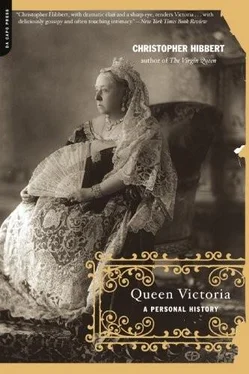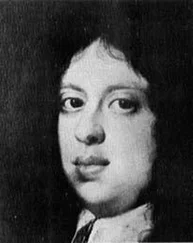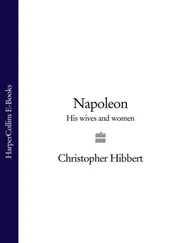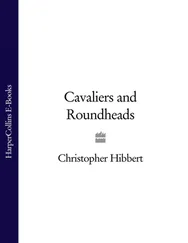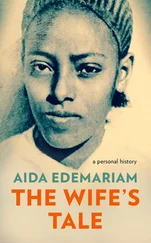Christopher Hibbert - QUEEN VICTORIA A Personal History
Здесь есть возможность читать онлайн «Christopher Hibbert - QUEEN VICTORIA A Personal History» — ознакомительный отрывок электронной книги совершенно бесплатно, а после прочтения отрывка купить полную версию. В некоторых случаях можно слушать аудио, скачать через торрент в формате fb2 и присутствует краткое содержание. Жанр: Биографии и Мемуары, на английском языке. Описание произведения, (предисловие) а так же отзывы посетителей доступны на портале библиотеки ЛибКат.
- Название:QUEEN VICTORIA A Personal History
- Автор:
- Жанр:
- Год:неизвестен
- ISBN:нет данных
- Рейтинг книги:5 / 5. Голосов: 1
-
Избранное:Добавить в избранное
- Отзывы:
-
Ваша оценка:
- 100
- 1
- 2
- 3
- 4
- 5
QUEEN VICTORIA A Personal History: краткое содержание, описание и аннотация
Предлагаем к чтению аннотацию, описание, краткое содержание или предисловие (зависит от того, что написал сам автор книги «QUEEN VICTORIA A Personal History»). Если вы не нашли необходимую информацию о книге — напишите в комментариях, мы постараемся отыскать её.
QUEEN VICTORIA A Personal History — читать онлайн ознакомительный отрывок
Ниже представлен текст книги, разбитый по страницам. Система сохранения места последней прочитанной страницы, позволяет с удобством читать онлайн бесплатно книгу «QUEEN VICTORIA A Personal History», без необходимости каждый раз заново искать на чём Вы остановились. Поставьте закладку, и сможете в любой момент перейти на страницу, на которой закончили чтение.
Интервал:
Закладка:
Yet the settlement of the Regency question, and the appointment of the Duchess of Northumberland as the Princess's English Governess, did nothing to improve relations between the Duchess of Kent and the Court which were also soured not only by the Duchess's attitude towards the King's illegitimate children but also by political differences; the King and Queen Adelaide both being strong Tories and known to be opposed to the Reform Bill which Lord Grey was endeavouring to push through Parliament; the Duchess of Kent, following her late husband's example, being as committed a Whig, and welcoming Whigs and reformers to Kensington Palace.
The family quarrel was exacerbated when the King proposed that the Princess's name of Victoria should be changed for an English one. Since Victoria had been named after herself, the Duchess naturally was upset by this request; but since the two names, Alexandrina and Victoria, her daughter bore had not been chosen by her but had been forced upon her by the late King, and since she was ready to concede that both, being foreign, were 'not suited to our national feeling', she agreed that they might be 'laid aside'. Soon afterwards, however, she changed her mind and much annoyed the King, who, persisting in his objection to Victoria as a name 'never known heretofore as a Christian name in this country', proposed Elizabeth instead. The Duchess declined to consider it. 5
Then there was trouble over Princess Victoria's appearances at Court, which the King and Queen wished were more frequent and which the Duchess and Conroy wanted to be 'as few as possible'. [iii] Years later, recalling these quarrels between her mother and the old royal family, Queen Victoria wrote, 'Oh, it was dreadful ... always on pins and needles, with the whole family hardly on speaking terms. I (a mere child) between two fires - trying to be civil then scolded at home' (Roger Fulford, Dearest Child: Letters between Queen Victoria and the Princess Royal; 8 March 1858, 72-3).
One reason which the Duchess persistently gave for keeping her daughter away from Court as much as possible was the presence of the King's bastard children, the FitzClarences, who moved into Windsor Castle, one after the other, until it was 'quite full with toute la bdtardise'. 6 Queen Adelaide raised no objection at all to this, but not so the Duchess of Kent. She insisted that nothing would induce her to allow her daughter to mix freely with the offspring of such a shameful relationship. 'I never did, neither will I ever, associate Victoria in any way with the illegitimate members of the Royal Family,' she told the Duchess of Northumberland. 'Did I not keep this line, how would it be possible to teach Victoria the difference between vice and virtue?' 7
Quarrels over Princess Victoria's attendances at Court were followed by a dispute over the Princess's style as Royal Highness, the word Royal having been omitted in a message to Parliament from the King concerning a proposed increased allowance of £6,000 for the Duchess. Then there was trouble over the Princess's precedence at the coronation, the King declaring that she must follow his brothers in the procession through Westminster Abbey, the Duchess insisting that she follow immediately after the King. When the King stood firm, the Duchess declared that, in that case, the Princess would not attend the coronation at all - maintaining that she could not afford the expense and that, in any case, the child's health made her attendance out of the question. The Princess, who had not been consulted, cried bitterly. 'Nothing could console me,' she said, 'not even my dolls.' 8She would have loved to go, she said: it would have been a special treat like her rare visits to Windsor, even though, being well aware of how much her mother disapproved of them, she was sometimes so nervous in the King's presence on these visits that he once complained of her stony stares. 'I was very much pleased there,' she wrote of one such visit, 'as both my Uncle and Aunt are so very kind to me.' She felt nothing but 'affectionate gratitude' to the King whose wish it was that 'she should be duly prepared for the duties' which she was destined to perform. 9
Kept apart from the King and Queen for months on end, with her uncle Leopold preoccupied with affairs in Belgium and with her half-sister, Feodora, now living in Germany, the Princess was more and more isolated at Kensington where she felt increasingly defenceless against the rule of Conroy so unquestioningly supported by her mother. Baroness Spath, who had presumed to question the 'Kensington System' and was believed to indulge the Princess unduly, had been dismissed after having been in the Duchess's service for a quarter of a century. It was decided that the time would also soon come to get rid of the Duchess of Northumberland who was not sufficiently subservient to Conroy's rule. At the same time an extra lady-in-waiting was appointed to the Duchess of Kent's household in the person of Lady Flora Hastings, daughter of the first Marquess of Hastings.
In the meantime steps were being taken to bring about the removal, or at least to lessen the influence, of Baroness Lehzen who was treated so rudely that it was hoped she would resign. This merely resulted in Princess Victoria becoming more attached than ever to Lehzen. 'I can never sufficiently repay her for all she has borne and done for me,' she wrote. 'She is the most affectionate, devoted, attached and disinterested friend that I have.' She was, the Princess added later, 'my ANGELIC dearest mother Lehzen, who I do so love'. It could not but give grim satisfaction to the Princess, as well as embarrass her, when the King, who warmly supported Lehzen, dismissed Conroy from the Chapel Royal -where his niece, looking so demure in a white lace dress and rose-trimmed bonnet, was about to be confirmed - on the grounds that the Duchess's retinue was too large. Upon her return to the Palace, upset as much by the Archbishop of Canterbury's admonitory sermon as by the stuffiness of the Chapel on that hot July day and by her mother's anger at the King's behaviour, she burst into tears.
On this day, 30 July 1835, Princess Victoria received a firm letter from her mother telling her that her relationship with Lehzen must now change: the Baroness was to be treated with more formality, less intimate affection. Dignity and friendly manners were 'quite compatible'. 'Until you are at the age of 18 or 21 years,' the Duchess added, 'you are still confided to the guidance of your affectionate mother and friend. ' 10
Nothing about the Duchess of Kent's behaviour exasperated King William more than what he termed the 'Royal Progresses' upon which she and Conroy took Princess Victoria so as to make her better known to the people over whom she was destined to rule and to introduce her to the leading families in the counties through which she passed.
The first of these journeys was undertaken in the summer and autumn of 1830 when the Duchess and Sir John Conroy and, as an unwanted companion for the Princess, Conroy's daughter Victoire, drove to Holly-mount in the Malvern hills, calling on the way at Stratford-on-Avon, Kenilworth and Warwick, and paying a visit to the Duke and Duchess of Marlborough at Blenheim Palace. They also went to Earl Beauchamp's house, Madresfield Court, Malvern and to the Duke of Beaufort's Badmin ton House. They visited Hereford, Gloucester and Stonehenge; at Bath on 23 October the Princess opened the Royal Victoria Park; at Worcester she was taken round the porcelain works.
There was another tour two years later when, in the summer of 1832, the Princess and her incompatible entourage set off for north Wales by way of the Midland counties. With the utmost annoyance, the King read of these 'disgusting parades', of the vociferous welcome accorded to his niece, of the bands and choirs, of the loyal addresses delivered and graciously accepted, the decorated triumphal arches, the salutes of cannon from the walls of castles, the flags and flowers, the cheering crowds, the escorts of regiments of yeomanry, the presentation of medals. Drawn by grey horses, caparisoned with ribbons and artificial flowers, the post-boys wearing conspicuous pink silk jackets and black hats, the royal party - 'the Conroyal party' as the disapproving called it - passed through Welshpool to Powis Castle and Caernarvon, then on to Plas Newydd on the island of Anglesey, home of the first Marquess of Anglesey, the one-legged cavalry commander, who had offered them the use of it. They returned by way of Eaton Hall in Cheshire, home of Lord Grosvenor, calling at Chester, where the Princess opened the Victoria Bridge spanning the river Dee, on their way to the Devonshires at Chatsworth where the Princess played her first game of charades and enjoyed her first tableaux vivants.
Читать дальшеИнтервал:
Закладка:
Похожие книги на «QUEEN VICTORIA A Personal History»
Представляем Вашему вниманию похожие книги на «QUEEN VICTORIA A Personal History» списком для выбора. Мы отобрали схожую по названию и смыслу литературу в надежде предоставить читателям больше вариантов отыскать новые, интересные, ещё непрочитанные произведения.
Обсуждение, отзывы о книге «QUEEN VICTORIA A Personal History» и просто собственные мнения читателей. Оставьте ваши комментарии, напишите, что Вы думаете о произведении, его смысле или главных героях. Укажите что конкретно понравилось, а что нет, и почему Вы так считаете.
